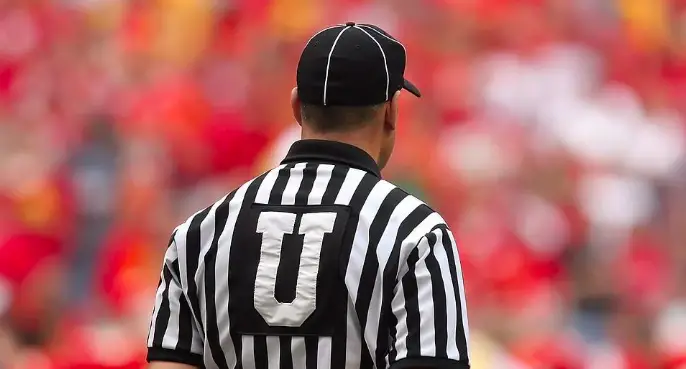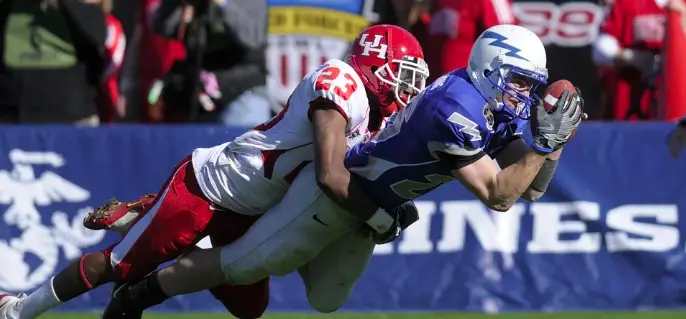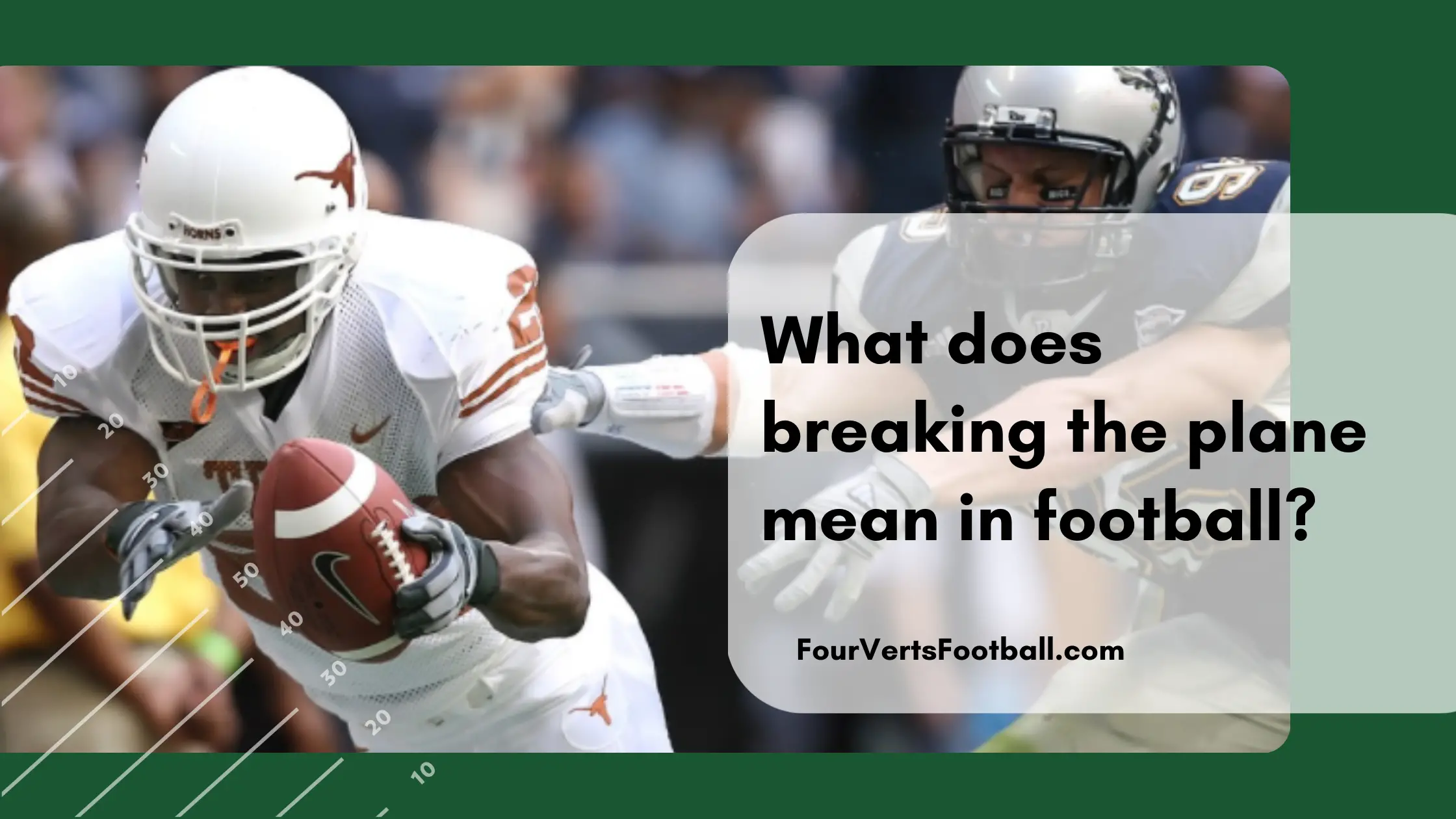If you have ever watched NFL Sundays and seen a player dive for the goal line you’ve likely heard the term breaking the plane. This football term is used to describe the action of a football entering the endzone.
Breaking the plane in football occurs when the tip of the football reaches the front line of the endzone. Imagine there is an invisible line starting at the very front of the goal line. When the tip of the football comes into contact with this line a touchdown is awarded.
Throughout this article, we are going to break down what breaking the plane is and how it affects the game.
Making The Call
Referees
On each play, the down judge and the line judge will be positioned on each sideline. If the play starts near the endzone these referees will be watching the goal line closely to see if the plane is broken.
They will have to watch in real-time to determine whether the ball broke the plane of the goal line.

Additionally, these officials will have to determine whether the player was downed prior to reaching the line. Or if the player was able to maintain control of the ball as they broke the plane of the endzone.
Challenging The Play
If either the offense or the defense does not agree with the call on the field regarding breaking the play they are able to challenge the play. A coach is able to challenge a play like this so long that it is not the final two minutes of either half.
Once this play is challenged the referees will talk amongst themselves as well as review the footage in order to assess the call on the field.
There must be conclusive evidence seen in the video replays in order to have the call overturned.
Each team has the opportunity to challenge calls during the game. Each team is given two challenges in total.
If one of their challenges results in a changed call then they will be given one more opportunity to challenge a play in the game.
Luckily for coaches on the defensive side of the ball scoring plays are always going to be reviewed. If a touchdown was called on the field the coach will not have to challenge the play for them to review the replay.
If the replay shows the runner did not break the plane then the touchdown will be called back.
Pylons And Their Cameras
One of the ways in which officials are able to review goal-line calls is through pylon cameras. In recent years cameras have been installed into the goal line pylons.
What this does is allow a unique camera angle to determine if the ball carrier broke the plane of the goal line.
Additionally, if a player is able to hit a pylon while in possession of the ball it is a touchdown. This is because the pylon occupies the space of that invisible line that rises above the goal line.
In other words, if you can hit the pylon with the ball then the ball has broken the plane.
This is why you will often see wide receivers or running backs reach out for the pylon when trying to get into the endzone.
Coming Up Short
Now that you know what it takes to break the plane it’s time to explain how you can come up short of a touchdown.
Getting Downed

The main way in which players are going to end up short of a touchdown is by being downed. To determine if a player is downed the referee must watch closely to see if any body part contacts the ground.
Aside from the hands or feet any body part coming into contact with the ground will render a player downed. This means when watching the ball meet the goal line the official must also watch that no body part touches the ground first.
This is why dives for the endzone are especially hard to call. And also why instant replay is used so often in these sorts of plays.
If you are downed short of the end zone your team will simply start from the location of the field in which you were downed.
Losing Possession
Another way in which a player can come up short for a touchdown is by losing possession of the ball. In order for a touchdown to occur a player must have possession of the ball when he breaks the plane.
If the player loses possession prior to breaking the plane his team may lose possession of the ball. If a player fumbles the ball through the endzone a touchback will occur and the other team will take possession of the ball.
This makes plays in which the ball carrier loses the ball right around the goal line incredibly important. This is because they can result in a touchdown or a turnover to the other team.
Conclusion
I hope you enjoyed this guide to understanding what breaking the plane means in football.
Remember for a touchdown to count the ball must come into contact with the touchdown line not cross it.
If you want to learn more about football see our articles on fines for players throwing footballs into the stands.

